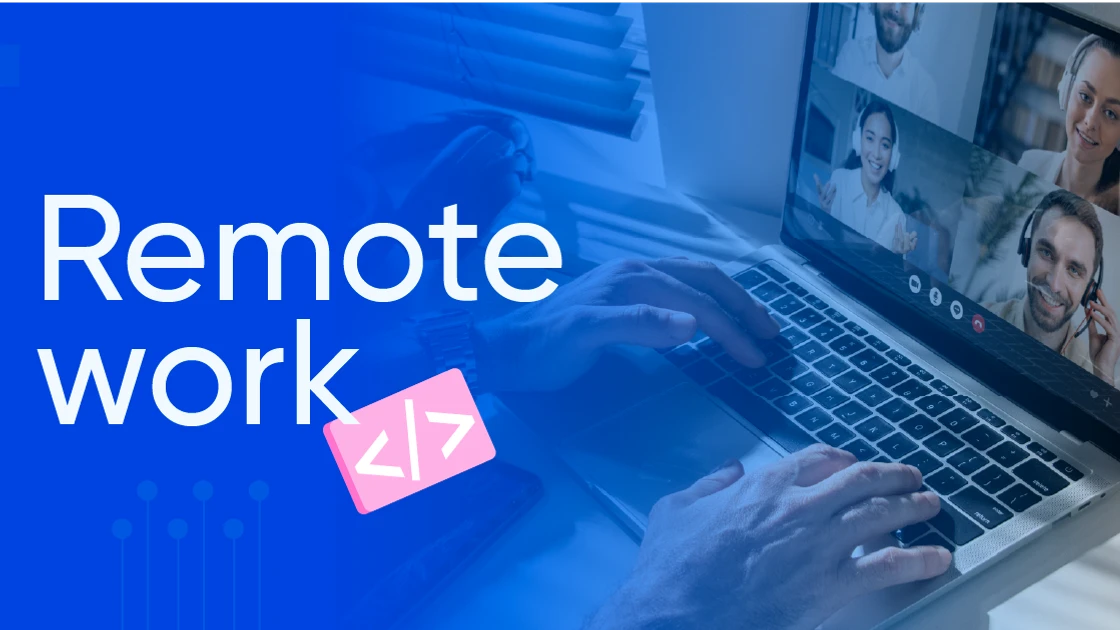US tech companies are rethinking how they build and manage teams. The old model, slow hiring, high costs, and a narrow talent pool, is no longer sustainable. Today, remote development teams through IT staff augmentation are becoming the go-to strategies for growth-minded CXOs.
Companies now expect the ability to tap into talent beyond borders that is on-demand, and without the usual overhead from fast-growing startups to large enterprises, leaders are hiring remote developers to stay flexible, move faster, and scale smarter.
This blog explores how this shift is helping tech leaders solve real business problems, reduce costs, and build high-performing teams without the delays of traditional hiring.
Here are the Benefits of Hiring Remote Developers
For tech leaders who are working under pressure to move fast and keep costs in mind, augmented teams offer clear advantages because this approach is all about building smarter teams that help you move from idea to execution comparatively faster.
CXOs Can expect the Following Benefits With Augmented Teams:
- Faster launches with no hiring delays: Traditional recruitment can take months. With remote hiring, pre-vetted developers are often available to start within days.
- On-demand access to niche skills: Whether you need to hire PHP developers for an enterprise software development project or you need Kotlin experts on board to speed up mobile delivery. With augmented teams, you can access global talent pools with deep specialization.
- Lower fixed costs: With no need for office space, local perks, or relocation packages, remote teams help reduce overall burn rate. You pay only for what you need, when you need it.
Around-the-clock development: By working across time zones, you create a follow-the-sun model. Progress continues even after your local team signs off. This accelerates delivery and helps resolve blockers faster.
Key Differences Between Remote Developers and Traditional Hiring
Many CXOs find that remote developers offer the same or even better performance when they have a clear roadmap, accountability structure, and defined goals.
Here is how remote development teams compare with traditional in-house teams across key business factors:
Factor | Remote Teams | In-House Teams |
Hiring Time | 1-2 days | 2–3 months |
Cost Efficiency | Lower salaries and overheads | High salaries, benefits, and office costs |
Talent Reach | Global access to niche skills | Limited to local talent |
Scalability | High flexibility to scale up and down | Fixed team size, longer approvals |
Daily Productivity | Time zone advantages, async progress | Fixed hours, limited flexibility |
Risk Management | Shared via platforms, contracts | Fully managed in-house |
How Remote Teams Address Talent Gaps With Speed?
Hiring top tech talent in the US today is no easy task. Founders face real challenges that slow down innovation and push up costs:
- A limited local talent pool, especially for specialized roles
- Slow and expensive hiring cycles with frequent offer rejections
High costs tied to salaries, benefits, office space, and retention programs
These bottlenecks impact product delivery, increase time-to-market, and hinder efficient scaling. This is where remote development teams step in with the flexibility, reach, and speed that in-house hiring often lacks.
These are valid concerns and there are proven ways to handle them:
- Clear onboarding plans to set expectations from day one
- Routine check-ins and updates to stay connected
Overlap planning across time zones to ensure real-time collaboration when needed
How Augmented Teams Solve The Challenges Effectively?
One of the smartest ways to work with remote development teams is through IT staff augmentation. This model allows you to hire remote developers on demand while keeping complete control over workflows and delivery.
This is what makes it different from traditional hiring:
- You pick the skill and time commitment you need
- Developers integrate directly into your existing team
You avoid long-term contracts and overhead
Staff augmentation helps you stay on track while scaling fast. Whether you need one developer or a full pod, you stay in control of the project, while the staff augmentation company handles vetting, payroll, and administrative tasks.
As the trend of IT staff augmentation continues, more businesses in the USA are choosing this approach over traditional outsourcing or in-house expansion.
The Future of Remote Tech Teams and What It Means for Hiring
Augmented teams are now cementing themselves into the DNA of tech giants and fast moving startups as well. The future of remote tech teams is about distributed excellence. Companies that are leveraging staff augmentation are enjoying the freedom to focus more on scalability rather than managing the long process of hiring tech talent.
Here is what this shift means for hiring:
- Global talent access is not limited now: With staff augmentation, you can now access to developers who can work in asynchronous environments, communicate with clarity, and align with product goals, not just time zones.
- Cultural and operational fit: Augmented developers integrate seamlessly into existing workflows and tools, and trusted staff augmentation companies also provide developers’ replacement if you have any performance issues.
- Outcome-driven roles are replacing task-based assignments: Remote augmented teams are being trusted with ownership beyond just execution. This shift has changed the definition of success metric.
Security and compliance are becoming hiring criteria: With remote access comes increased scrutiny; staff augmentation companies must ensure developers meet enterprise-grade standards for data handling and infrastructure access.
Conclusion
Remote development teams are transforming how tech companies operate, helping them move faster, cut costs, and tap into a wider pool of skilled talent. This approach offers unmatched flexibility, fosters innovation, and gives greater control over project,s all without the overhead and delays that come with traditional hiring.
Being able to hire remote developers through reliable IT staff augmentation models provides a powerful advantage. It allows leaders to quickly scale their teams based on project demands, fill skill gaps instantly, and maintain high-quality output without long-term commitments.
Frequently Asked Questions
Q. Why is it popular to hire remote developers?
IT staff augmentation lets companies hire pre-vetted remote developers to join their teams for specific projects or ongoing needs without the long-term contracts or overhead of full hires. This model keeps companies in control of workflows and culture, while freeing them from staffing bottlenecks and letting specialized talent contribute immediately where it’s needed most.
Q. What are the main challenges of managing remote development teams, and how can they be addressed?
The biggest challenges include communication gaps, time zone coordination, and maintaining team culture. Platforms like Crewmate help solve these issues through structured onboarding, regular check-ins, clear goal-setting, and smart overlap planning, making real-time collaboration smoother and more effective.
Q. What makes remote development teams a better choice than traditional in-house teams?
Remote teams offer faster hiring on lower costs and access to global talent access along with the flexibility to scale team. Whereas, in-house teams provide stability but come with higher overheads, longer hiring cycles, and limited reach.


